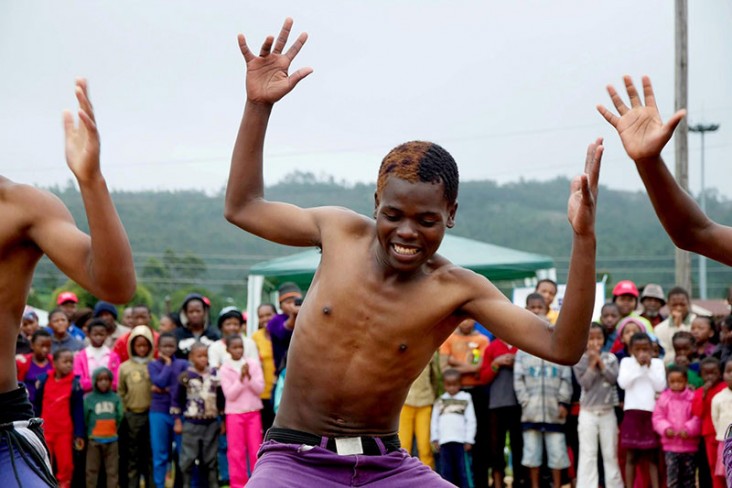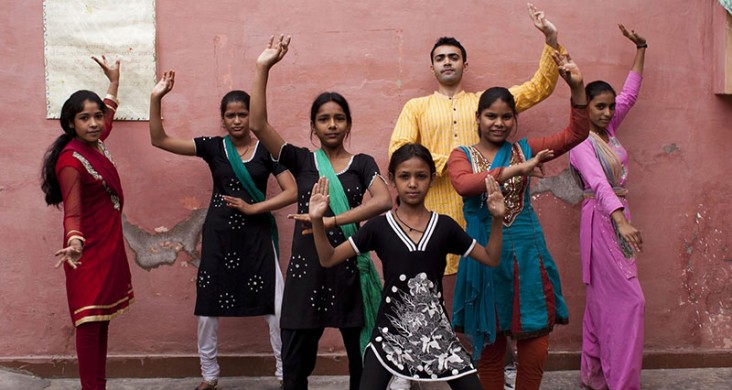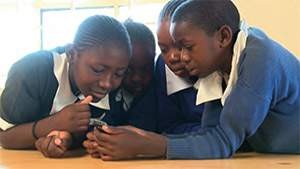- What We Do
- Agriculture and Food Security
- Democracy, Human Rights and Governance
- Economic Growth and Trade
- Education
- Ending Extreme Poverty
- Environment and Global Climate Change
- Gender Equality and Women's Empowerment
- Global Health
- Water and Sanitation
- Working in Crises and Conflict
- U.S. Global Development Lab

HIV Infection among Youth
Around the world, young people ages 15–24 account for 35 percent of new HIV infections in people aged 15 and older. Among young people living with HIV, 78 percent (3.6 million) live in sub-Saharan Africa. Additionally, adolescent girls and young women, in particular, account for more than 70 percent of new HIV infections among adolescents in sub-Saharan Africa.
Despite these startling statistics, youth are a critical yet often underserved and neglected age group for HIV and AIDS efforts globally. Reaching people with HIV prevention services when they are young – and before they have established practices that increase their risk of HIV infection – is an essential step. Earlier diagnosis and linkages of HIV-positive youth to care and treatment reduces their risk of passing the virus onto others.

USAID’S Response
The U.S. Agency for International Development (USAID) is committed to working with the global health community to achieve an AIDS-free generation. USAID’s work is guided by the USAID Youth in Development Policy [PDF, 1.4MB]. The policy’s goal is to improve youths’ capacities and enable their aspirations, so they can contribute to and benefit from more stable, democratic, and prosperous communities and nations. U.S. President’s Emergency Plan for AIDS Relief (PEPFAR) programming aligns with the Youth in Development Policy, recognizing the need for countries to focus their youth programming based on the cultural, epidemiologic, and context-specific circumstances of their countries. The policy maintains the need to consider more integrated and cross-sectoral programming to meet the holistic needs of youth.

Recent Programmatic Highlights
DREAMS
The DREAMS (Determined, Resilient, Empowered, AIDS-free, Mentored and Safe) Initiative is an ambitious $385 million partnership to reduce HIV infection among adolescent girls and young women in HIV priority areas within Kenya, Lesotho, Malawi, Mozambique, South Africa, Swaziland, Tanzania, Uganda, Zambia, and Zimbabwe. The 10 DREAMS countries, all in sub-Saharan Africa, accounted for nearly half of the new HIV infections that occurred among adolescent girls and young women globally in 2014.
YouthPower
YouthPower is a USAID project that strengthens local, national, and global systems to achieve sustainable, positive youth outcomes in health, education, and political and economic empowerment. YouthPower supports cross-sectoral, positive youth development investments, which empower youth to reach their full potential. The project consists of two complementary contracts: YouthPower: Implementation and YouthPower: Evidence and Evaluation.
- YouthPower: Implementation focuses on the design and implementation of positive youth development programming and policies; capacity-strengthening of youth-serving institutions, including governmental and civil society organizations; and promotion of increased youth engagement in development efforts.
- YouthPower: Evidence and Evaluation focuses on research and evaluation of youth programming; assessment to inform program design; and dissemination of knowledge in the field of positive youth development.
Additional Resources
- USAID Youth in Development Policy [PDF, 1.4MB]
- Promoting Partner Reduction: Helping Young People Understand and Avoid HIV Risks from Multiple Partnerships [PDF, 21.2MB]
- Pediatric and Youth Disclosure Materials – Available in English, French, Xhosa, and Portuguese.
- Toolkit: Transitioning of Care and Other Services for Adolescents Living with HIV [PDF, 1.8MB]
The following guides are recommended to be used jointly:







Comment
Make a general inquiry or suggest an improvement.